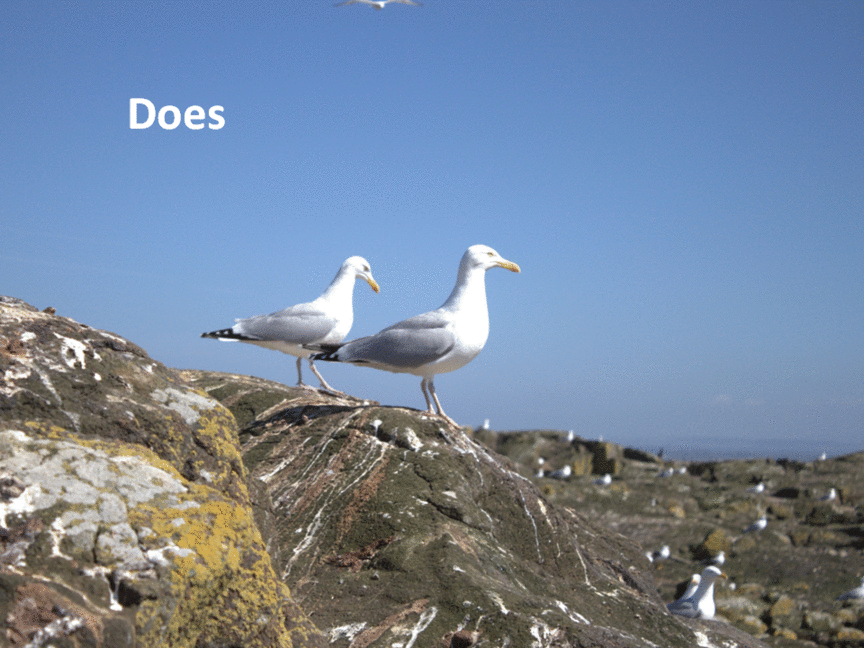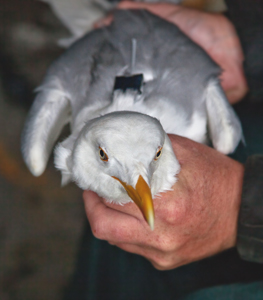Variation in resource use and success between herring gull colonies
Coastal marine environments contain some of the most diverse and productive habitats. Pressure on these habitats has increased markedly over the last several decades. Seabirds that use these coastal marine habitats, as apex predators, have the potential to be used as monitors on the state of coastal habitats. Larger gulls are a widespread species using the marine coastal environment and are showing contrasting population trends across the British Isles.
In this project, we compare the diet, breeding success and movement of herring gulls at multiple colonies in the south-west of Scotland and Northern Ireland. The study colonies are located in contrasting landscapes which allows looking at the effects of the availability of different habitats on the parameters that we study. Over three years we collected diet and breeding success data across multiple colonies. The results from the comparison of diet and breeding success data revealed that where herring gulls were consuming the most marine prey they also bred most successfully.
In four colonies we have given a few birds small backpacks with tiny GPS loggers. On the Ayrshire cost we are following birds from on lady isle and Pladda. These are colonies where gull populations have been stable over the past few decades and are close to a dense human population. In contrast the bids from the two colonies on Islay and Oronsay have been declining over the past few years.
These loggers send back information about the birds’ locations so that we can find out about how far birds travel to forage and how long they stay out, as well as what habitats the birds visit while raising young in the nest but also during the winter months. Our birds have now had these GPS-loggers for three years and there are still several birds collecting data for us. So the story is still continuing and watch out for updates.

Researchers
Ruedi Nager
Outputs
Nager, R.G., O’Hanlon, N.J. 2016. Changing Numbers of Three Gull Species in the British Isles. Waterbirds 39: 15-28. https://doi.org/10.1675/063.039.sp108
O’Hanlon N.J., McGill. R.A.R, Nager R.G. 2017. Increased use of intertidal resources benefits breeding success in a generalist gull species. Marine Ecology Progress Series 574: 193–210 https://doi.org/10.3354/meps12189
Funding
EU INTTERREG IV - through the IBIS project


